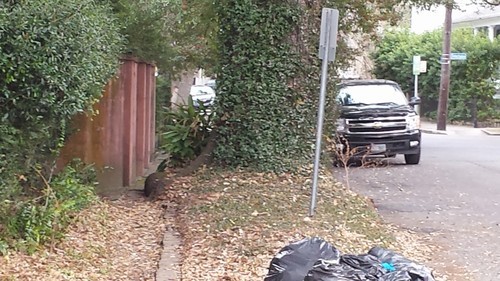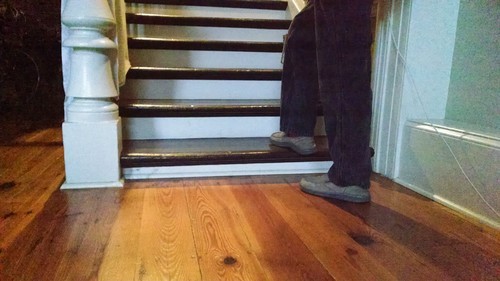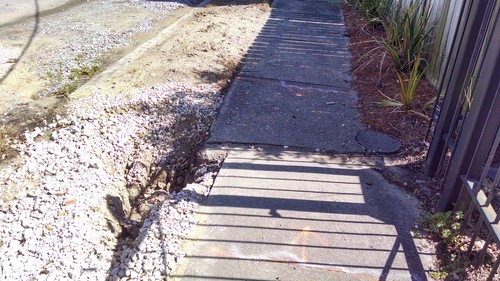Once the plane touches down in NOLA, once you’ve gotten into the taxi and headed to your hotel, just as soon as your foot hits the pavement you need to know one thing. Watch your step.
 You might have notice the taxi ride was a bit bumpy, but you passed that off as “bad shocks”. But I’m tellin’ ya, it’s the roads. Somewhere deep in the New Orleans culture is a love for pot holes. It’s right there, nestled in between our love for hot and spicy crawfish and the Saints (WHO DAT!). As a transplant myself, that’s just a guess; I’ve noticed we don’t seem to make fixing potholes a priority.
You might have notice the taxi ride was a bit bumpy, but you passed that off as “bad shocks”. But I’m tellin’ ya, it’s the roads. Somewhere deep in the New Orleans culture is a love for pot holes. It’s right there, nestled in between our love for hot and spicy crawfish and the Saints (WHO DAT!). As a transplant myself, that’s just a guess; I’ve noticed we don’t seem to make fixing potholes a priority.Odds are you’re going to take a walk somewhere. Most folks would recommend the Garden District, Audubon Park, Uptown, or around the quarter, which are all fabulous hoofs. But let me say again. Watch. Your. Step.
Sidewalks here are a kind of afterthought to urban living. We have them. Mostly. But they’re not exactly pedestrian friendly. Like our potholes, broken stretches of sidewalks are just our way. A NOLA local who recently moved to California marveled at the flat and even sidewalks of San Jose! That possibility had never occurred to her.
 |
| Where'd it go? |
Here in New Orleans sidewalks are not the responsibility of the city; they are the responsibility of the home owner or business. It’s their land, they can do what they want. Which means they can simply not have sidewalks at all. If they do they can be cement, blacktop, paving stones, stepping stones, or a little trail through the grass. It’s not uncommon that along a smaller street you’ll trend upon an assortment of textures.
 The city has the final say, of course. If your sidewalk is a particular problem or danger they can fine you. Having spent many hours stepping over an array of sink holes, concrete chunks, and bumptious roots I shudder to imagine what might be finable.
The city has the final say, of course. If your sidewalk is a particular problem or danger they can fine you. Having spent many hours stepping over an array of sink holes, concrete chunks, and bumptious roots I shudder to imagine what might be finable.Remember, too, we’re in the deep south. Which means warm climbs. Which means lush greenery. Which means things grow faster here than and angry bees zips along in July. Our neighborhoods are bursting — literally — with awesome trees. And big, healthy trees come with big, healthy roots that have no issues about breaking up concrete and mangling sidewalks. They can turn up a sidewalk more quickly and efficiently than the homeowners can repair them.
 The city of New Orleans was established in 1714, which makes it older than the United States. Most of the buildings within the French Quarter are younger than that, thanks to the fire of 1788 which destroyed all but two buildings (a convent, spared due to it’s large courtyard which separated it from other burning buildings, and Jean Lafitte’s Blacksmith shop, saved by it’s slate roof). Even in the reconstruction safety regulations were a bit more lax then than now. For instance, stairways may be narrower and steeper than any in modern buildings you’re used to. This is in my own home. Notice the first step?
The city of New Orleans was established in 1714, which makes it older than the United States. Most of the buildings within the French Quarter are younger than that, thanks to the fire of 1788 which destroyed all but two buildings (a convent, spared due to it’s large courtyard which separated it from other burning buildings, and Jean Lafitte’s Blacksmith shop, saved by it’s slate roof). Even in the reconstruction safety regulations were a bit more lax then than now. For instance, stairways may be narrower and steeper than any in modern buildings you’re used to. This is in my own home. Notice the first step?
Walk around, enjoy the gorgeous gardens and flowers and buildings and bars, and all the while remember our matras:
“Laissez les bons temps rouler”, “Who Dat!”, and “WATCH YOUR STEP”.


No comments:
Post a Comment